On the cover of the red box it says “Natural Garden” (자연의 뜰). As you open the box, you can see that it carries about a dozen glossy orange-red persimmons. The persimmons are as big as a man’s fist. As you peel one of the fruits and bite into a slice of it, the sweet persimmon juice moistens your lips.
“Why are persimmons never sold like apples, I thought,” said Kim Jong-ok, the manager and farmer of Natural Garden, his farm’s persimmon brand. Kim seemed very busy at his warehouse checking and packaging persimmons in the middle of harvest season. “Big, red, ripe apples are often sold in nice packaging, being marketed as gifts and being somewhat pricier, but persimmons are marketed in plastic bags at the best and can never charge a premium. Persimmons are often thought as cheap. I wanted to change that preconception.”
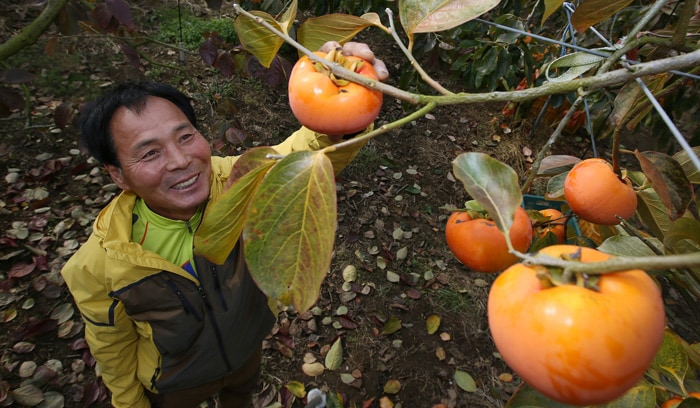
It is the middle of harvest season for persimmons in Gurye, Jeollanam-do Province (South Jeolla Province). Kim Jong-ok, who runs his own persimmon farm Natural Garden, says he wants to prove that persimmons can be high-end gift products, like apples.
Across East Asia, persimmons are a beloved autumn and winter fruit. People peel them and eat them, dry them and eat them as snacks, and ripen them and eat them like pudding with a spoon. However, persimmons somehow have never been thought of as a fruit for a fancy gift fruit basket. Kim decided to break that preconception and launched his own persimmon brand, Natural Garden. He now produces and sells tasty, high-quality persimmons in fancy packaging.
Preconceptions, of course, are not easily broken by marketing alone. “I focused on growing persimmons that were big, pretty and sweet because small and ugly persimmons have no value as a product,” Kim said as he explained his strategy. To make his plans a reality, he first grew a new persimmon variety called the Taechu. Taechu persimmons are grown, harvested and sold in the market from mid-October. The variety has a thinner peel than other varieties that are harvested in November and have a bit more water in them, making them crispier. “I thought that, these days, young people would like the crisp taste of the Taechu persimmon,” Kim added.
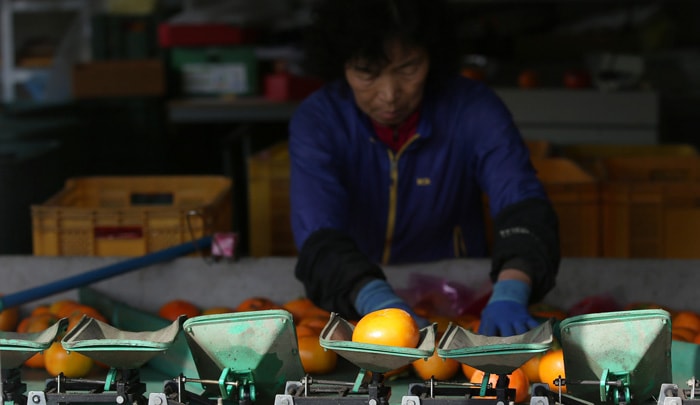
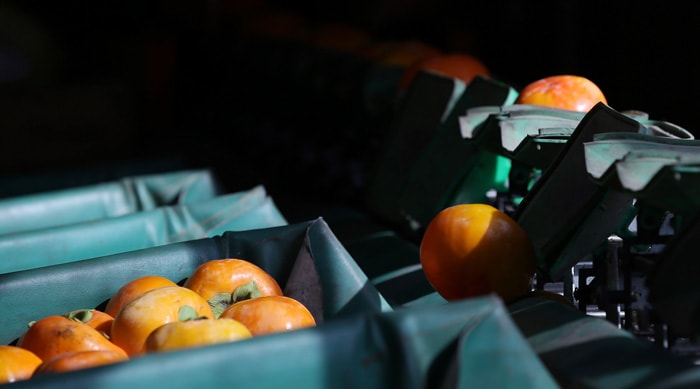
The warehouse at Natural Garden in Gurye is busy as staff check the harvested persimmons and package them in boxes. Not only the staff, but Kim’s entire family works in the warehouse during the harvest.
He then made the environment better for growing bigger fruit. “To grow larger persimmons, the trees have to grow taller and be well-placed, and only deep roots can make the trees grow taller. However, the soil here is quite hard and firm. To help the trees root well, I had to turn over the soil,” said Kim. Helping the trees breathe well is also important. “Generally, people plant persimmon trees about 60 centimeter deep. I planted my trees 80 centimeters deep and also buried some breathing pipes for the trees, to help the roots breathe underground.”
His persimmons generally have a sweetness of about 17 degrees Brix, Kim said. Considering that an average amount of degrees Brix in other persimmons is about 14.5, and that a difference of only 0.5 degrees Brix can be tasted on a human tongue, you can imagine how sweet Kim’s persimmons are. It is no surprise that his persimmons will be on display at the Korea Fruit Festival Expo that opens on Nov. 19 in Seoul. Kim won second place in the persimmons category at the Korea Fruit Festival Expo in 2011.
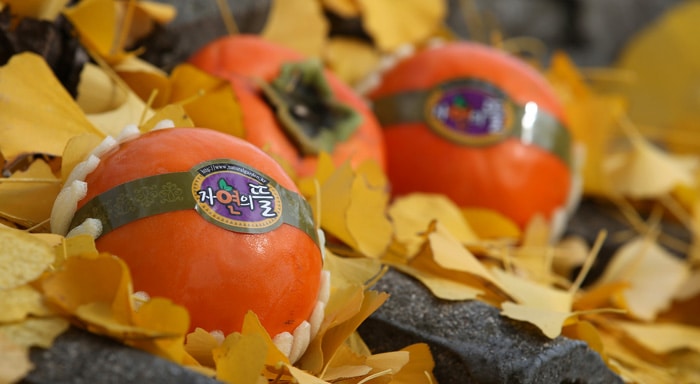
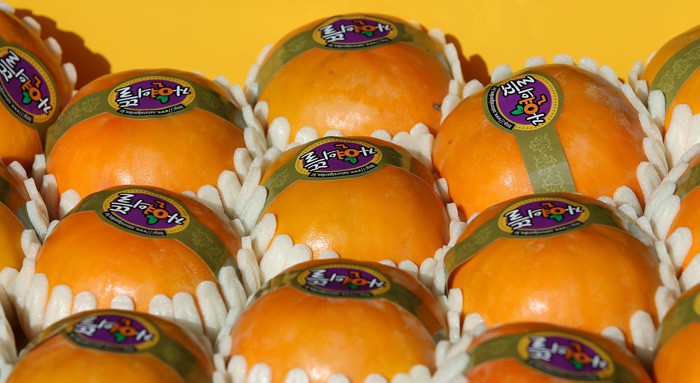
As a winner at the Korea Fruit Festival Expo in 2011, Kim’s persimmons are acclaimed as high-quality fruit. Now his farm, Natural Garden, is winning renown as a successful, trustworthy producer of persimmons from consumers across the country.
Not only people in the industry, but also general consumers are praising his persimmons. Natural Garden has more and more orders every year. Kim harvests about 400,000 persimmons per year. Corporate buyers buy in bulk to get seasonal gifts for their customers or employees, but there is also a chain of customers who have actually tasted Kim’s persimmons first-hand and purchase them over and over again, attracted by his sweet and tasty persimmons. These direct purchases account for almost 30,000 boxes per year. Thanks to a contract with the post office, consumers can get their products quickly and immediately. In fact, when a customer in Seoul orders in the afternoon, they’ll receive their box of fruit in the morning the next day. Though Kim is getting most of his orders over the phone, he’s planning to expand his services online to attract younger customers.
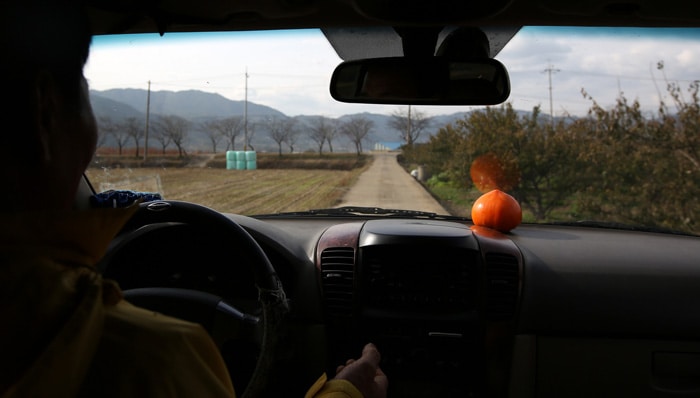
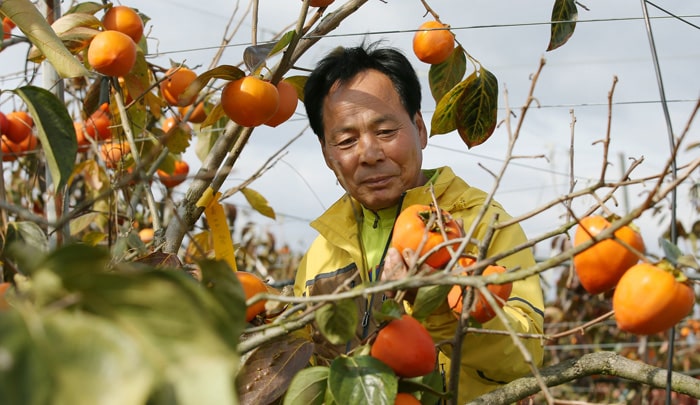
Kim Jong-ok recently developed a new variety of persimmon called the ‘Jongok,’ named after himself. Looking around his farm, he shows his passion to make the biggest, prettiest and sweetest persimmons on the market today.
Even though the industry and consumers have already widely acclaimed his persimmons, he has not been complacent. He recently developed a new persimmon variety, called the “Jongok,” naming it after himself. At first, one might be mistaken to think that this new variety is the best persimmon ever, encompassing all of Kim’s knowhow and skills. However, ‘Jongok’ persimmons are actually not very sweet upon harvesting. Why did he put his name to a not-sweet variety of fruit? “Well, they’re big and pretty. You can use them as home decorations because look at the color. They can also be stored for a long time.” Unlike most sweet persimmons, which look like crushed or squashed balls, Jongok persimmons look like love hearts, with slightly pointed ends. Indeed, Jongok persimmons are a sort of byproduct that has come from his efforts to make bigger, prettier persimmons.
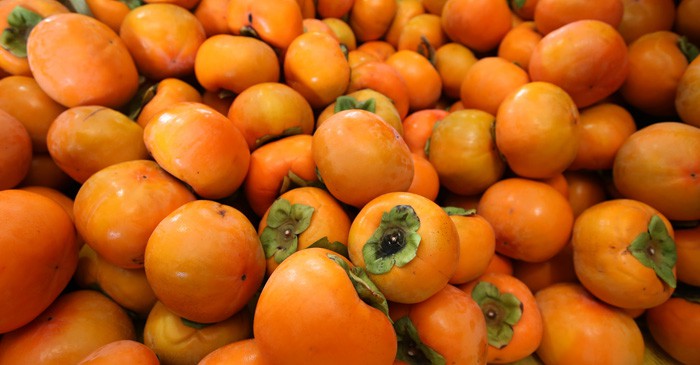
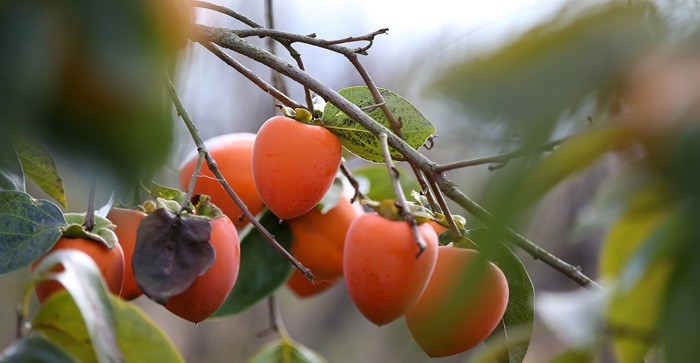
Often eaten in the autumn and winter across East Asia, persimmons are categorized into two types: round, flat, hard sweet persimmons are peeled off and eaten (top), while love heart-shaped persimmons aren’t eaten until they ripen and become soft.
To help pollination, Kim raises bees in his farm. Also, not to waste the nutritious persimmon flowers, he takes them, dries them and makes them into tea. He used to farm beans, but doesn’t’ anymore and solely focuses on the persimmons.
In the future, he plans to expand his farm from the current 23,000 square meters to 33,000 square meters and to grow more Taechu persimmons. This happy farmer has, indeed, put his all into his persimmon farming.
By Chang Iou-chung
Korea.net Staff Writer
Photos: Jeon Han
icchang@korea.kr























